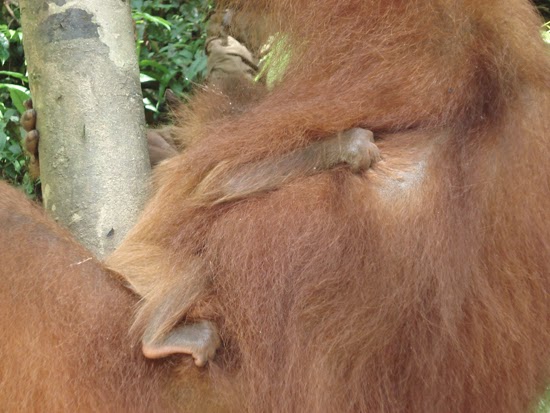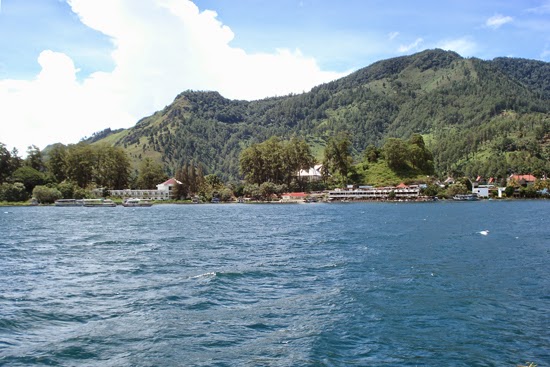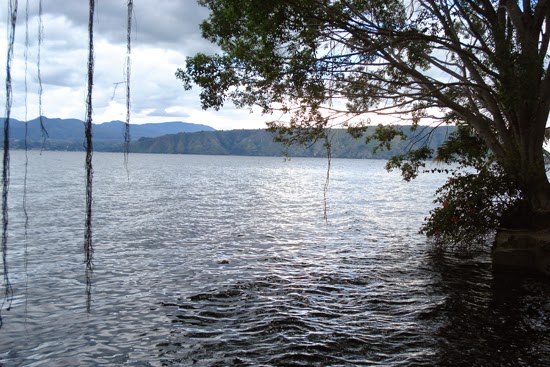As mentioned in my post here, I am inspired to share with you my travel to Bukit Lawang to visit Orangutan & Lake Toba -the biggest crater lake in the world. Both are completely different place and separated by kilometers away.
Bukit Lawang is a small village at the bank of Bahorok River in North Sumatra (Sumatra is one of the big island in the Indonesian archipelago) approximately 86 km north-west of Medan (capital city of North Sumatra). Bukit Lawang is known for the largest animal sanctuary of Sumatran orangutan (around 5,000 orangutans occupy the area -or maybe less), and also the main access point to the Leuser Montain National Park (coming from the east side).
Bukit Lawang rehabilitation center for orangutans was founded in 1973. The main purpose is to preserve the decreasing number of orangutan population due to hunting, trading and deforestation.
I was super thrilled and happy to see them up-close and personal; one of the best experience of my life!
Parapat is a small town in North Sumatra province on the edge of Lake Toba, on the Uluan Peninsula where it forms the narrowest eastern link to Samosir Island. It is the primary transit point by ferry for visitors going to Samosir Island, and connected via Trans Sumatra highway to Pematang Siantar by a 48 km road.
Lake Toba is a crater lake that is 100 kilometres long, 30 kilometres wide, and up to 505 meters deep. Located in the middle of the northern part of the Indonesian Island of Sumatra with a surface elevation of about 900 meters, it is the largest volcanic lake in the world.[1]
Lake Toba is the site of a massive supervolcanic eruption estimated at VEI 8 that occurred 69,000 to 77,000 years ago, representing a climate-changing event. It is the largest known explosive eruption on earth in the last 25 million years. According to the Toba catastrophe theory, it had global consequences for human populations: it killed most humans living at that time and is believed to have created a population bottleneck in central east Africa and India, which affects the genetic make up of the human world-wide population to the present. This hypothesis is not widely accepted because evidence is lacking for a decline or extinction of other animals, including species that are sensitive to changes in the environment.
It has been accepted that the eruption of Toba led to a volcanic winter with a worldwide decrease in temperature between 3 to 5 °C (5.4 to 9.0 °F), and up to 15 °C (27 °F) in higher latitudes. Additional studies in Lake Malawi in East Africa show significant amounts of ash being deposited from the Toba eruptions, even at that great distance, but little indication of a significant climatic effect in East Africa.
Bukit Lawang is a small village at the bank of Bahorok River in North Sumatra (Sumatra is one of the big island in the Indonesian archipelago) approximately 86 km north-west of Medan (capital city of North Sumatra). Bukit Lawang is known for the largest animal sanctuary of Sumatran orangutan (around 5,000 orangutans occupy the area -or maybe less), and also the main access point to the Leuser Montain National Park (coming from the east side).
Bukit Lawang rehabilitation center for orangutans was founded in 1973. The main purpose is to preserve the decreasing number of orangutan population due to hunting, trading and deforestation.
I was super thrilled and happy to see them up-close and personal; one of the best experience of my life!
From Bukit Lawang and a couple of night stays, we are moving to Parapat.
Parapat is a small town in North Sumatra province on the edge of Lake Toba, on the Uluan Peninsula where it forms the narrowest eastern link to Samosir Island. It is the primary transit point by ferry for visitors going to Samosir Island, and connected via Trans Sumatra highway to Pematang Siantar by a 48 km road.
Lake Toba is a crater lake that is 100 kilometres long, 30 kilometres wide, and up to 505 meters deep. Located in the middle of the northern part of the Indonesian Island of Sumatra with a surface elevation of about 900 meters, it is the largest volcanic lake in the world.[1]
Lake Toba is the site of a massive supervolcanic eruption estimated at VEI 8 that occurred 69,000 to 77,000 years ago, representing a climate-changing event. It is the largest known explosive eruption on earth in the last 25 million years. According to the Toba catastrophe theory, it had global consequences for human populations: it killed most humans living at that time and is believed to have created a population bottleneck in central east Africa and India, which affects the genetic make up of the human world-wide population to the present. This hypothesis is not widely accepted because evidence is lacking for a decline or extinction of other animals, including species that are sensitive to changes in the environment.
It has been accepted that the eruption of Toba led to a volcanic winter with a worldwide decrease in temperature between 3 to 5 °C (5.4 to 9.0 °F), and up to 15 °C (27 °F) in higher latitudes. Additional studies in Lake Malawi in East Africa show significant amounts of ash being deposited from the Toba eruptions, even at that great distance, but little indication of a significant climatic effect in East Africa.
view from our balcony, life is good!!!
I enjoyed the biking around the Samosir island 30 km one way and another 45km back and around..
:P
thank you all for visiting and reading this post...
this is one of the best travel that I made....
xxx













































